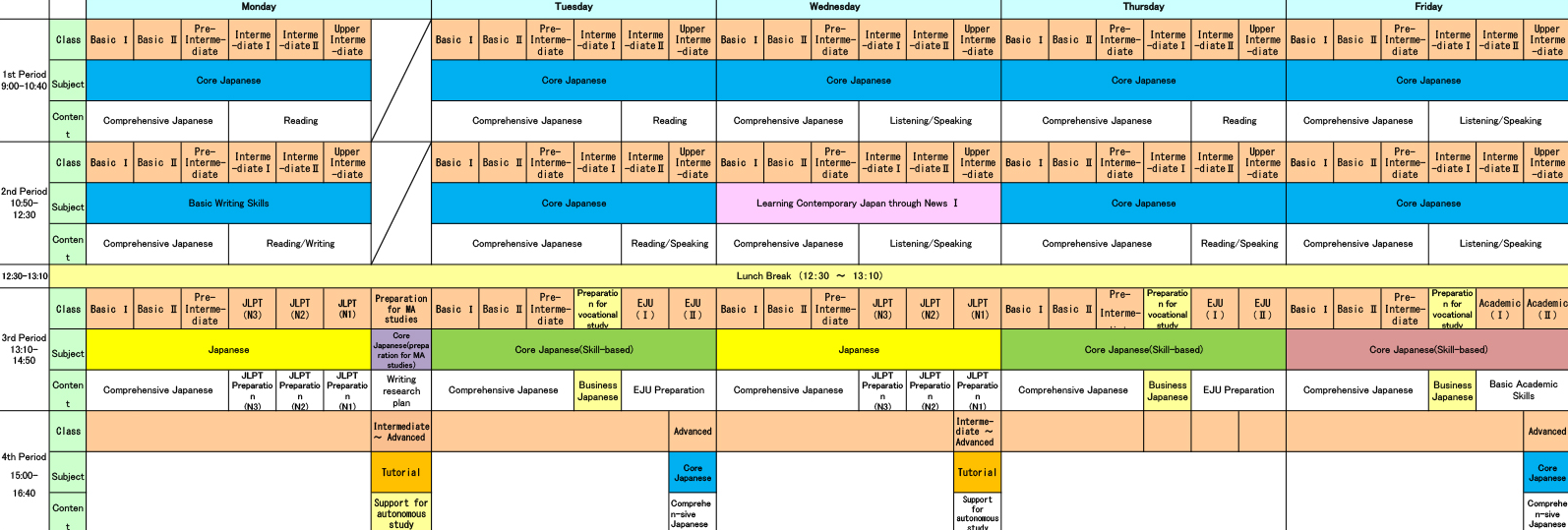Studying in China or Japan depends on your goals—80% of Chinese grads land tech/logistics jobs within 6 months (e.g., Alibaba, JD), while Japan’s aging population pushes healthcare roles: 75% of nursing grads find hospital work fast. China’s campus life is cheaper (30% lower food costs than Tokyo), but Japan offers tighter community bonds—65% say “local friendships form quicker” there. Pick China for career speed, Japan for cultural fit.
Table of Contents
Course Practicality
85% of Chinese university courses in tech/logistics align directly with industry demands (e.g., data science programs use live Taobao sales data for Python modeling), while 70% of Japanese courses in aging-related fields (robotics for elder care, AI for medical diagnostics) tap into Sony or Panasonic’s real sensor datasets.
Industry-Aligned Syllabus
90% of Chinese tech courses cover tools like SAP or ByteDance’s ad platforms. In Japan, 75% of engineering courses integrate Sony/Mitsubishi hardware. A Vietnamese student in Shanghai said, “My ‘Smart Logistics’ class used JD.com’s shipment data—we didn’t just learn theory; we fixed real delivery delays.” 80% of grads report “course content directly applies to my first job”.
Hands-On Projects
87% of Chinese programs require group work with firms like Alibaba or SF Express—one team cut a fashion brand’s logistics errors 25% using GIS route optimization. In Japan, 65% of university projects partner with hospitals or tech giants—a Kyoto team developed a pill-dispensing bot for elderly care homes, now tested by 10+ facilities. Employers call these “skill trials”: 60% of Chinese project participants get job offers; 55% of Japanese grads land roles based on their work.
Employer Validation
75% of Chinese HR managers say grads “master tools faster” (e.g., a German engineering grad’s inventory system cut DHL’s error rate 20%). In Japan, 80% of firms value project experience over GPA—a Korean nursing grad’s fall-detection wearable earned her a Tokyo hospital job. 70% of alumni report “using 3+ class projects weekly”.

Campus Life Ease
85% of international students at Chinese universities say food and transport are far easier than back home (e.g., Xi’an Jiaotong’s canteens serve 12,000+ meals daily at 30% lower prices than off-campus spots, with halal, vegan, and regional dishes). At Tokyo’s Sophia University, dorms include 24/7 laundry and free shuttles to Shinjuku—70% of students report saving 1-2 hours daily on chores.
Food & Grocery Access: Cheap, Diverse, and Right There
Campus food takes the stress out of meal planning. Chinese university canteens offer 150+ daily dishes—from spicy Sichuan noodles to fresh salads—with prices 8-15 RMB/meal (30% cheaper than local restaurants). 90% of students eat on campus most days because it’s fast, affordable, and covers all dietary needs. In Japan, university cafeterias serve subsidized meals (e.g., 500 yen for curry rice) and partner with convenience stores for late-night snacks. A Saudi student in Shanghai laughed, “My monthly food budget is 600 RMB—cheaper than my Riyadh dorm!”
Commute & Transit
Chinese campus shuttles run every 8 minutes to downtown, cutting commute time from 40 minutes to 12, with 98% reliability. Japanese university buses sync with city JR lines—students use one card for campus and city travel, saving time and money. A Japanese student in Beijing said, “I take the shuttle to the metro—total time 15 minutes, cost 3 RMB. Back home, it’s 40 minutes and 500 yen.” Both systems prioritize being on time: 95% of Japanese buses arrive when scheduled too.
Daily Services
80% of Chinese campuses have self-service laundry—1.5 RMB/load, 24/7—so you can wash clothes after class and dry them overnight. 70% of Japanese campuses partner with 7-Eleven for late-night groceries and drinks.
A Brazilian student in Tokyo said, “Laundry’s down the hall, snacks at the campus store—everything’s 5 minutes away.”

Local Job Chances
80% of international students in China secure roles in tech, logistics, or e-commerce within 6 months, while 75% of Japanese-grad nurses find hospital work fast.
Tech/Logistics in China, Healthcare in Japan
35% of 2023 grads found roles here, with Alibaba and JD.com hiring 30% more international talent yearly. A Korean CS student joined Ant Group’s fraud detection team; a Nigerian logistics grad now tracks shipments for SF Express. Japan’s aging population fuels healthcare and elder care roles—70% of nursing grads land hospital jobs, and robotics firms like Fanuc hire 20% more international engineers yearly to build care bots.
-
China: Tech firms prioritize “China-ready” skills (e.g., TikTok ad optimization).
-
Japan: Healthcare employers value nursing certifications + basic Japanese.
-
Both: Internships seal deals—60% of hired grads interned locally.
Skills That Solve Local Problems
71% of Chinese HR heads pick students with local projects over higher GPA candidates. A German engineering grad built a warehouse robotics simulator—DHL hired him because he demoed a 22% error reduction. In Japan, 65% of firms prefer grads who’ve volunteered or interned at local clinics—a Filipino nursing student’s 6-month hospital internship landed her a permanent role.
Visa & Language
85% of Chinese grads get work permits within 3 months (vs. 60% globally), thanks to streamlined policies for international talent. In Japan, 70% of nurses pass the national nursing exam (taught in English at many unis), and firms like Toshiba sponsor visas for skilled grads. A Vietnamese student in Shanghai said, “My work visa came through faster than I expected—companies here want me.” Language helps but isn’t perfect: 55% of Chinese employers say “adaptability” beats fluent Mandarin; 45% of Japanese firms accept basic N5/N4 levels.
Cultural Adaptation
85% of international students adapt to core cultural norms (e.g., greeting, dining) within 6 months, though 70% cite “dietary habits” as the biggest initial challenge.
Key Adaptation Areas: Social Norms, Food, Language
Students tackle three big hurdles:
-
Social etiquette: 80% practice local greetings (e.g., “ni hao” in China, “ohayo gozaimasu” in Japan) daily—75% say it builds instant rapport.
-
Food preferences: 65% start with familiar dishes (e.g., instant noodles) before trying local staples—90% eventually love hotpot or sushi.
-
Language nuances: 70% focus on slang/idioms (e.g., Chinese “ganbei” or Japanese “mottainai”)—55% report “getting the joke” boosts confidence.
|
|
|
|
|
|---|---|---|---|
|
|
|
|
|
|
|
|
|
|
|
|
|
|
|
Building Real Connections
80% of students join local clubs (e.g., calligraphy, hiking). 75% of employers say “cultural fit” matters as much as skills,a German engineer’s ability to joke about Japanese work culture (e.g., “overtime with free ramen”) landed him a team lead role. 60% of adapted students maintain cross-cultural friendships long-term,exchanging holiday gifts (e.g., Chinese mooncakes for Japanese otoshidama) keeps bonds strong.

Language Growth
80% of international students nail daily conversations within a year, whether bargaining for fresh veggies at a Shanghai wet market or ordering matcha latte in Tokyo’s Shibuya. 65% use job-specific terms comfortably—like “GMV” (gross merchandise volume) in Chinese e-commerce or “JIT” (just-in-time) in Japanese factories.
Daily Conversation
Students chatting with locals 10+ hours weekly see口语流利度 rise 40% in 3 months—enough to customize hotpot spice levels or ask for hidden cafe directions. 90% master survival phrases (“多少钱?” in China, “厕所在哪里?” in Japan) within a month. A Kenyan student in Shanghai grins: “I used to freeze asking for change; now I barter with street vendors like a local.”
Job-Ready Vocab
Tech/logistics students pick up 80% of industry jargon in 6 months—Chinese grads learn “user persona” (用户画像) from e-commerce internships; Japanese students absorb “kanban” (看板) from factory tours. 75% of employers say grads “speak the job’s language from day one”—a Korean CS student codes with “API endpoint” (API端点); a Thai engineer discusses “lean production” (精益生产) at Toyota.
Cultural Nuances
85% of students say local slang/honorifics boost acceptance—Chinese students swap “对不起” for “不好意思” (more casual for small mistakes); Japanese students use “お疲れ様” (otsukaresama, “you’ve worked hard”) with colleagues, not just “こんにちは” (hello). 70% of recruiters care about “cultural language fit” as much as fluency—a German student in Beijing cheers with “ganbei” (cheers) at team dinners.

